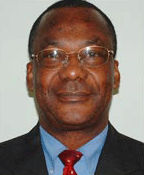

Can we begin with the profile assigned to the Texfed in the wellbeing of South African textile industry? What all services it renders?
The objectives of the Texfed are:-
To promote the development and well-being of the Textile Industry in South Africa in the interests of its members and of the country as a whole
To collate and disseminate information, statistics and other data which relate to or affect the South African Textile Industry and make such information available to members and where appropriate to use the information in the interests of the Industry
Where is your country’s textile and clothing industry heading to? What significance it assumes in your country’s economy?
The textile industry was identified as one of the economic growth drivers in the country due to its ability to create employment but it has been going through a tough time in the global village due to cheap imports which have been flooding the local market since the opening up of the market after 1994 when the country came out of the closed and isolated economy due to the political situation changes.
SADC Free Trade Agreement has taken-off its full operations in this year. What are your comments on its success in conformity to its rationale, and how has it benefited your industry?
We have not seen any benefits from the SADC Free Trade Agreement as the agreement will be seen to favour other SADC countries to export to South Africa.
Which all competitive advantages are offered by South African Textile industry?
The country has raw materials, reliable hardworking workforce, “cheap electricity” although the cost is being increased, transport infrastructure, very good ports, good transport logistics, stable political environment, very good banking systems and infrastructure, centrally positioned country to both the east and the west markets and a well managed economy
Please share with us your views on current economic decline encompassing the globe.
Whilst the current economical decline has affected the global village it has had some effects in South Africa but the effect has been cushioned to some extend due to the way the economy has been run. The current economic decline has affected the cost of doing business due to increase in oil prices and there is some relief due to falling oil prices. Bearing in mind that our economy is no longer isolated we arte affected by the trends taking place in the global village.
Cotton and Mohair are counted as major strengths of your textile industry. How are these sectors faring presently and what all efforts are made to boost them further?
We import a certain percentage of the cotton that we use in the country and take advantage of the cotton grown in the SADC Region. Most of the processing equipment in the country is geared towards the short staple spinning. This sector of our industry has been hard hit by cheap commodity textiles from the Far East and the industry has shrunk. The Clothing sector has been hit the hardest as cheap imports are flooding the market. The country produces a fair percentage of the world mohair fibre but unfortunately over 70% of the fibre is export in semi-processed form.
The government has put in place initiatives in place in order to help revive the once prosperous textile industry. One of the initiatives is the Customized Sector Programme which will be implemented early in the New Year. The Texfed is participating in programme fully as this will assist in the growth of the industry.
Do you think second hand clothing kills interest of textile and clothing industries?
Second hand clothing must be condemned in the strongest terms as this just kills the textile and clothing industries of the country. The argument that it provides affordable clothing is false as the importers are the people who benefit whilst creating unemployment as the industry closes its doors. There is no way of controlling what is coming in as second hand clothing which is a health hazard.
-----------------------------------
DISCLAIMER: All views and opinions expressed in this column are solely of the interviewee, and they do not reflect in any way the opinion of Fibre2Fashion.com.